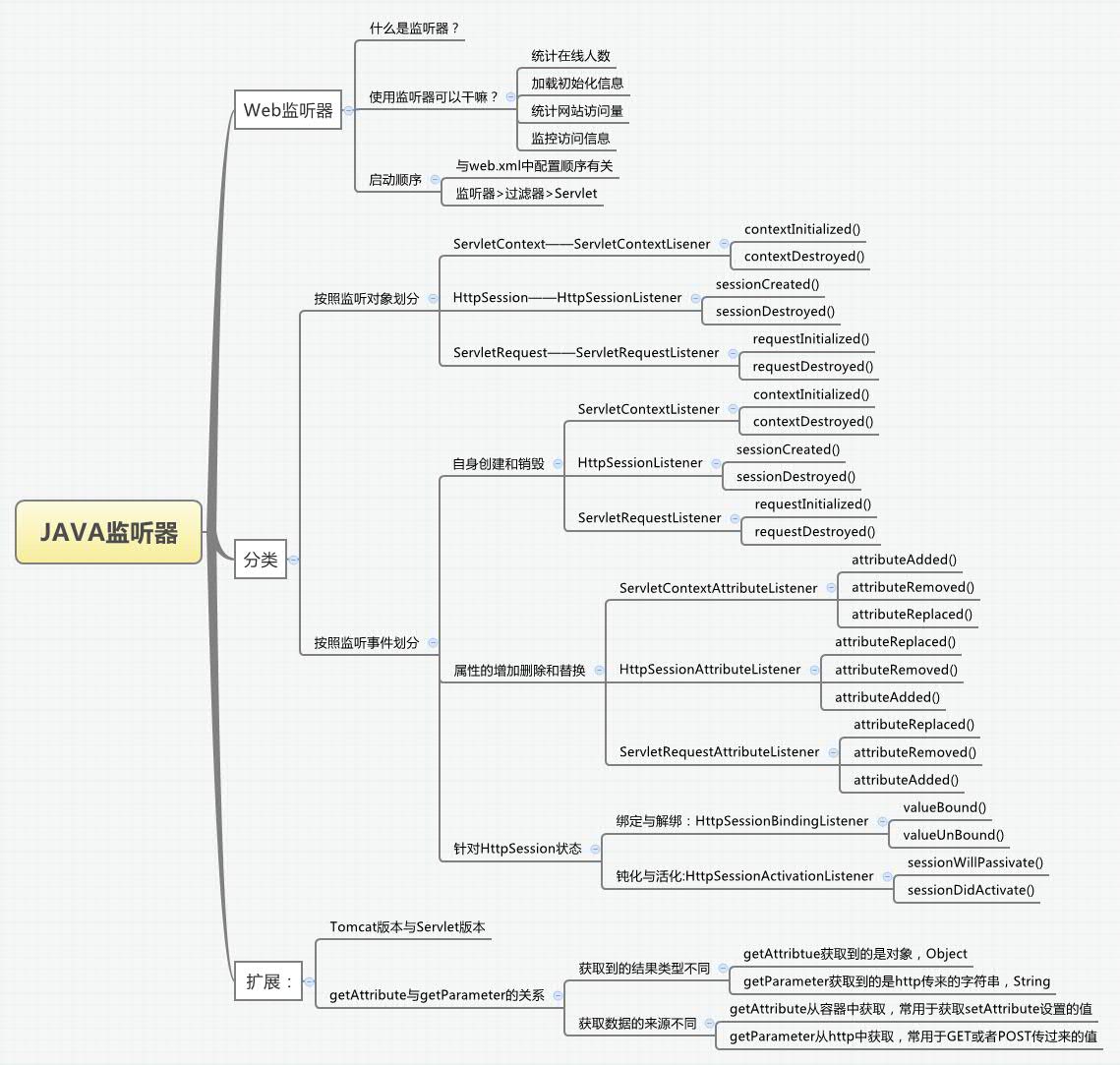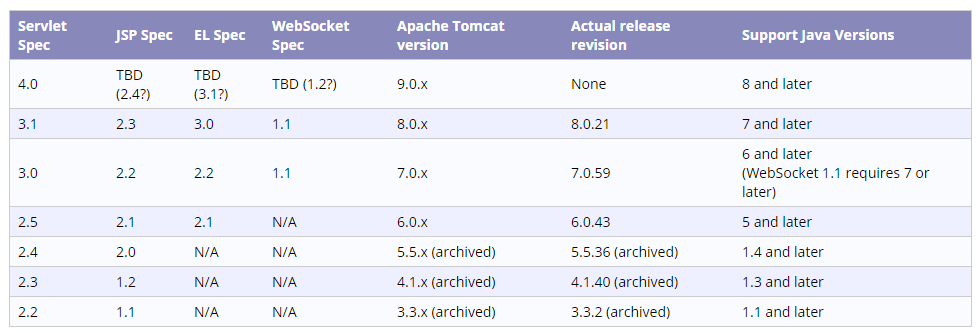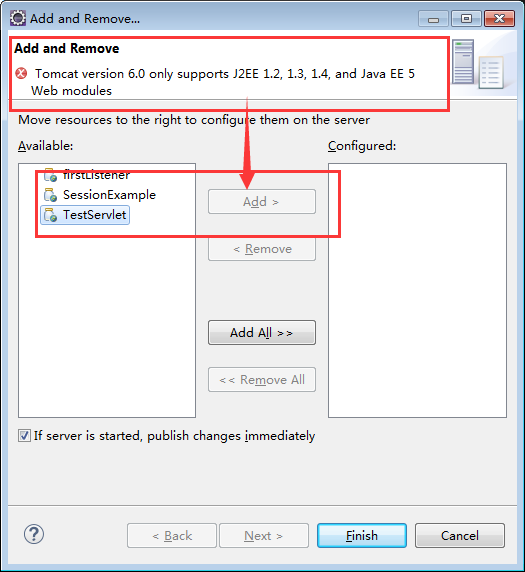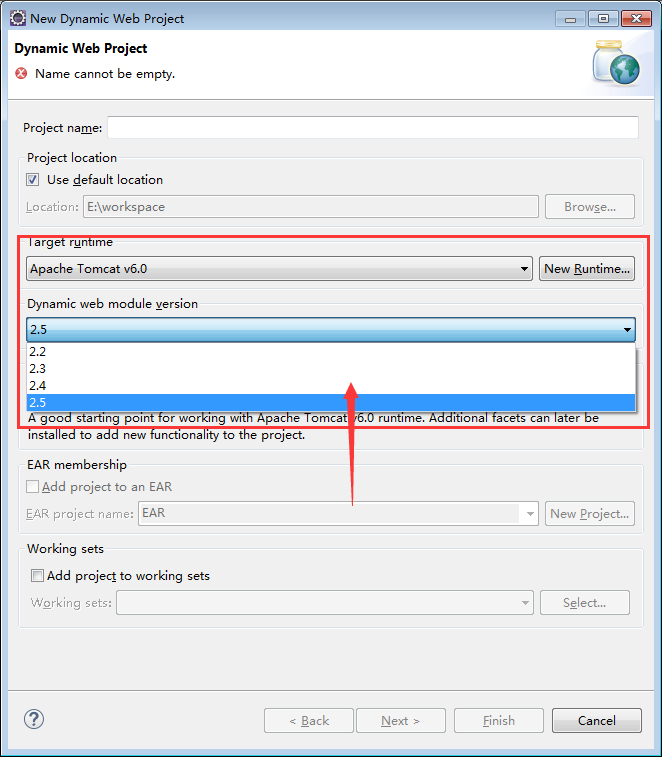Web监听器导图详解
监听器是JAVA Web开发中很重要的内容,其中涉及到的知识,可以参考下面导图:

Web监听器
1 什么是web监听器?
web监听器是一种Servlet中的特殊的类,它们能帮助开发者监听web中的特定事件,比如ServletContext,HttpSession,ServletRequest的创建和销毁;变量的创建、销毁和修改等。可以在某些动作前后增加处理,实现监控。
2 监听器常用的用途
通常使用Web监听器做以下的内容:
统计在线人数,利用HttpSessionLisener
加载初始化信息:利用ServletContextListener
统计网站访问量
实现访问监控
3 接下里看看一个监听器的创建以及执行过程
首先需要创建一个监听器,实现某种接口,例如我想实现一个对在线人数的监控,可以创建如下的监听器:
public class MyListener implements HttpSessionListener{
private int userNumber = 0;
public void sessionCreated(HttpSessionEvent arg0) {
userNumber++;
arg0.getSession().setAttribute("userNumber", userNumber);
}
public void sessionDestroyed(HttpSessionEvent arg0) {
userNumber--;
arg0.getSession().setAttribute("userNumber", userNumber);
}
}
然后在web.xml中配置该监听器,在web-app中添加:
<listener>
<listener-class>com.test.MyListener</listener-class>
</listener>
在JSP中添加访问人数:
<body>
在线人数:<%=session.getAttribute("userNumber") %><br/>
</body>
当我使用我的浏览器访问时,执行结果如下:

当打开另一个浏览器访问时:

由于打开另一个浏览器访问,相当于另一个会话,因此在线人数会增加。
对于3.0版本的Servlet来说,还支持使用注解的方式进行配置。
那么接下来看看都有哪些监听器以及方法吧!
监听器的分类
1 按照监听的对象划分:
按照监听对象的不同可以划分为三种:
ServletContext监控:对应监控application内置对象的创建和销毁。
当web容器开启时,执行contextInitialized方法;当容器关闭或重启时,执行contextDestroyed方法。
实现方式:直接实现ServletContextListener接口:
public class MyServletContextListener implements ServletContextListener{
public void contextDestroyed(ServletContextEvent sce) {
}
public void contextInitialized(ServletContextEvent sce) {
}
}
HttpSession监控:对应监控session内置对象的创建和销毁。
当打开一个新的页面时,开启一个session会话,执行sessionCreated方法;当页面关闭session过期时,或者容器关闭销毁时,执行sessionDestroyed方法。
实现方式:直接实现HttpSessionListener接口:
public class MyHttpSessionListener implements HttpSessionListener{
public void sessionCreated(HttpSessionEvent arg0) {
}
public void sessionDestroyed(HttpSessionEvent arg0) {
}
}
ServletRequest监控:对应监控request内置对象的创建和销毁。
当访问某个页面时,出发一个request请求,执行requestInitialized方法;当页面关闭时,执行requestDestroyed方法。
实现方式,直接实现ServletRequestListener接口:
public class MyServletRequestListener implements ServletRequestListener{
public void requestDestroyed(ServletRequestEvent arg0) {
}
public void requestInitialized(ServletRequestEvent arg0) {
}
}
2 按照监听事件划分:
2.1 监听事件自身的创建和销毁:同上面的按对象划分。
2.2 监听属性的新增、删除和修改:
监听属性的新增、删除和修改也是划分成三种,分别针对于ServletContext、HttpSession、ServletRequest对象:
ServletContext,实现ServletContextAttributeListener接口:
通过调用ServletContextAttribtueEvent的getName方法可以得到属性的名称。
public class MyServletContextAttrListener implements ServletContextAttributeListener{
public void attributeAdded(ServletContextAttributeEvent hsbe) {
System.out.println("In servletContext added :name = "+hsbe.getName());
}
public void attributeRemoved(ServletContextAttributeEvent hsbe) {
System.out.println("In servletContext removed :name = "+hsbe.getName());
}
public void attributeReplaced(ServletContextAttributeEvent hsbe) {
System.out.println("In servletContext replaced :name = "+hsbe.getName());
}
}
HttpSession,实现HttpSessionAttributeListener接口:
public class MyHttpSessionAttrListener implements HttpSessionAttributeListener{
public void attributeAdded(HttpSessionBindingEvent hsbe) {
System.out.println("In httpsession added:name = "+hsbe.getName());
}
public void attributeRemoved(HttpSessionBindingEvent hsbe) {
System.out.println("In httpsession removed:name = "+hsbe.getName());
}
public void attributeReplaced(HttpSessionBindingEvent hsbe) {
System.out.println("In httpsession replaced:name = "+hsbe.getName());
}
}
ServletRequest,实现ServletRequestAttributeListener接口:
public class MyServletRequestAttrListener implements ServletRequestAttributeListener{
public void attributeAdded(ServletRequestAttributeEvent hsbe) {
System.out.println("In servletrequest added :name = "+hsbe.getName());
}
public void attributeRemoved(ServletRequestAttributeEvent hsbe) {
System.out.println("In servletrequest removed :name = "+hsbe.getName());
}
public void attributeReplaced(ServletRequestAttributeEvent hsbe) {
System.out.println("In servletrequest replaced :name = "+hsbe.getName());
}
}
2.3 监听对象的状态:
针对某些POJO类,可以通过实现HttpSessionBindingListener接口,监听POJO类对象的事件。例如:
public class User implements HttpSessionBindingListener,Serializable{
private String username;
private String password;
public String getUsername() {
return username;
}
public void setUsername(String username) {
this.username = username;
}
public String getPassword() {
return password;
}
public void setPassword(String password) {
this.password = password;
}
public void valueBound(HttpSessionBindingEvent hsbe) {
System.out.println("valueBound name: "+hsbe.getName());
}
public void valueUnbound(HttpSessionBindingEvent hsbe) {
System.out.println("valueUnbound name: "+hsbe.getName());
}
}
Session数据的钝化与活化:
由于session中保存大量访问网站相关的重要信息,因此过多的session数据就会服务器性能的下降,占用过多的内存。因此类似数据库对象的持久化,web容器也会把不常使用的session数据持久化到本地文件或者数据中。这些都是有web容器自己完成,不需要用户设定。
不用的session数据序列化到本地文件中的过程,就是钝化;
当再次访问需要到该session的内容时,就会读取本地文件,再次放入内存中,这个过程就是活化。
类似的,只要实现HttpSeesionActivationListener接口就是实现钝化与活化事件的监听:
public class User implements HttpSessionBindingListener,
HttpSessionActivationListener,Serializable{ private String username;
private String password; public String getUsername() {
return username;
} public void setUsername(String username) {
this.username = username;
} public String getPassword() {
return password;
} public void setPassword(String password) {
this.password = password;
} public void valueBound(HttpSessionBindingEvent hsbe) {
System.out.println("valueBound name: "+hsbe.getName());
} public void valueUnbound(HttpSessionBindingEvent hsbe) {
System.out.println("valueUnbound name: "+hsbe.getName());
} public void sessionDidActivate(HttpSessionEvent hsbe) {
System.out.println("sessionDidActivate name: "+hsbe.getSource());
} public void sessionWillPassivate(HttpSessionEvent hsbe) {
System.out.println("sessionWillPassivate name: "+hsbe.getSource());
} }
Servlet版本与Tomcat版本
首先看一下Tomcat官网给出的匹配:

如果版本不匹配,那么tomcat是不能发布该工程的,首先看一下版本不匹配时,会发生什么!
我试图创建一个web工程,并且选取了Servlet3.0版本:

然后我想要在tomcat6中发布,可以看到报错了!
JDK版本不对....这是在平时开发如果对Servlet不熟悉的web新手,常犯的错误。

解决方法:
1 在创建时,直接发布到Tomcat容器中,此时Servlet仅仅会列出Tomcat支持的版本:

2 修改工程Servlet版本配置信息,文件为:工作目录\SessionExample\.settings\org.eclipse.wst.common.project.facet.core.xml
<?xml version="1.0" encoding="UTF-8"?>
<faceted-project>
<runtime name="Apache Tomcat v6.0"/>
<fixed facet="java"/>
<fixed facet="wst.jsdt.web"/>
<fixed facet="jst.web"/>
<installed facet="java" version="1.7"/>
<installed facet="jst.web" version="2.5"/>
<installed facet="wst.jsdt.web" version="1.0"/>
</faceted-project>
getAttribute与getParameter的区别
这部分是对JSP的扩展,经常在JSP或者Servlet中获取数据,那么getAttribute与getParameter有什么区别呢?
1 从获取到数据的来源来说:
getAttribtue获取到的是web容器中的值,比如:
我们在Servlet中通过setAttribute设定某个值,这个值存在于容器中,就可以通过getAttribute方法获取;
getParameter获取到的是通过http传来的值,比如这样一个http请求:
http:localhost:8080/test/test.html?username=xingoo
还有其他的GET和POST方式,都可以通过getParameter来获取。
2 从获取到的数据类型来说:
getAttribute返回的是一个对象,Object。
getParameter返回的是,前面页面中某个表单或者http后面参数传递的值,是个字符串。
参考
【1】慕课网,监听器:http://www.imooc.com/learn/271
【2】jsp中getAttribute与getParameter的区别:http://wenku.baidu.com/link?url=4URJWerrusLTFRviR1sAlTH4BKc7QswiRYsso3xaYs_nZMiTMV-TwCnIIgu31K1N9HbrUhfgO2-jXjpYe1hGZn9RBo3b8HHzY2Dn2-Fcbs7
Web监听器导图详解的更多相关文章
- Web监听器导图详解(转)
阅读目录 Web监听器 监听器的分类 Servlet版本与Tomcat版本 getAttribute与getParameter的区别 参考 监听器是JAVA Web开发中很重要的内容,其中涉及到的知识 ...
- java Web监听器导图详解
监听器是JAVA Web开发中很重要的内容,其中涉及到的知识,可以参考下面导图: Web监听器 1 什么是web监听器? web监听器是一种Servlet中的特殊的类,它们能帮助开发者监听web中的特 ...
- Vue基础开发入门之简单语法知识梳理(思维导图详解)
基于个人写的以下关于Vue框架基础学习的三篇随笔,在此基础上,做一个阶段性的知识总结,以此来检验自己对Vue这一段时间学习的成果,内容不多,但很值得一看.(思维导图详解)
- (转)CAS (4) —— CAS浏览器SSO访问顺序图详解(CAS Web Flow Diagram by Example)
CAS (4) —— CAS浏览器SSO访问顺序图详解(CAS Web Flow Diagram by Example) tomcat版本: tomcat-8.0.29 jdk版本: jdk1.8.0 ...
- CAS (4) —— CAS浏览器SSO访问顺序图详解(CAS Web Flow Diagram by Example)
CAS (4) -- CAS浏览器SSO访问顺序图详解(CAS Web Flow Diagram by Example) tomcat版本: tomcat-8.0.29 jdk版本: jdk1.8.0 ...
- CAS (6) —— Nginx代理模式下浏览器访问CAS服务器网络顺序图详解
CAS (6) -- Nginx代理模式下浏览器访问CAS服务器网络顺序图详解 tomcat版本: tomcat-8.0.29 jdk版本: jdk1.8.0_65 nginx版本: nginx-1. ...
- web.xml常用配置详解
web.xml常用配置详解 context-param 指定 ServletContext(上下文) 配置文件路径,基本配置一般是Spring配置文件,或者是spring-security的配置文件. ...
- SPI总线协议及SPI时序图详解
SPI,是英语Serial Peripheral Interface的缩写,顾名思义就是串行外围设备接口.SPI,是一种高速的,全双工,同步的通信总线,并且在芯片的管脚上只占用四根线,节约了芯片的管脚 ...
- SPI总线协议及SPI时序图详解【转】
转自:https://www.cnblogs.com/adylee/p/5399742.html SPI,是英语Serial Peripheral Interface的缩写,顾名思义就是串行外围设备接 ...
随机推荐
- vue -model
1. v-model:监听表单(input,textarea,selector)value. 2. label不知道你有没有这样的体验,我明明没有点用户名输入框,而仅仅是点了“用户名”三个字,然后就直 ...
- PHP中is_*() 函数用法
PHP中is_*() 函数用法 is_a - 如果对象属于该类或该类是此对象的父类则返回 TRUE is_array - 检测变量是否是数组 is_bool - 检测变量是否是布尔型 is_calla ...
- Simple Factory (简单工厂模式)
简单工厂模式不是23种设计模式之一,简单工厂模式属于创建型模式, 又叫做静态工厂方法(Static Factory Method) 简单工厂模式是工厂模式家族中最简单实用的模式,可以理解为是不同工厂模 ...
- ant 重置(修改)DatePicker MonthPicker Cascader 的值
1.清空值 this.props.form.resetFields(); 2.监听 props 的变化,触发 清空按钮 .
- 安卓camera拍照时序
转自:http://blog.csdn.net/tankai19880619/article/details/17147125 一.看看调用时序图 1.拍照命令时序图 2.拍照数据回调时序图 二.看看 ...
- 转发:【PHP】转义和过滤html单、双引号及HTML标签
一.单引号和双引号转义在PHP的数据存储过程中用得比较多,即往数据库里面存储数据时候需要注意转义单.双引号: 先说几个PHP函数: 1.addslashes — 使用反斜线引用(转义)字符串: 返回字 ...
- SpringMVC学习小结
配置web.xml: <servlet> <servlet-name>dispatcherServlet</servlet-name> <servlet-cl ...
- 记一次.net core调用SOAP接口遇到的问题
背景 最近需要将一些外部的Web Service及其他SOAP接口的调用移到一个独立的WebAPI项目中,然后供其他.Net Core项目调用.之前的几个Web Service已经成功迁 ...
- UIPopoverController具体解释
今天一位童鞋问我个问题.大意是popoverController不会显示.经过我寻找问题发现以下这种方法不好掌控. 为什么说他不好掌控那.我这个给大家带来一个列子.通过这个列子来介绍PopoverCo ...
- spring in action第一章小结1
1 spring基本理念是简化java开发. 使用以下4个策略简化java开发 1) 基于POJO的轻量级和最小侵入性编程 2)通过使用DI和AOP实现松耦合 3)基于切面和惯例进行声明式编程 4)通 ...
